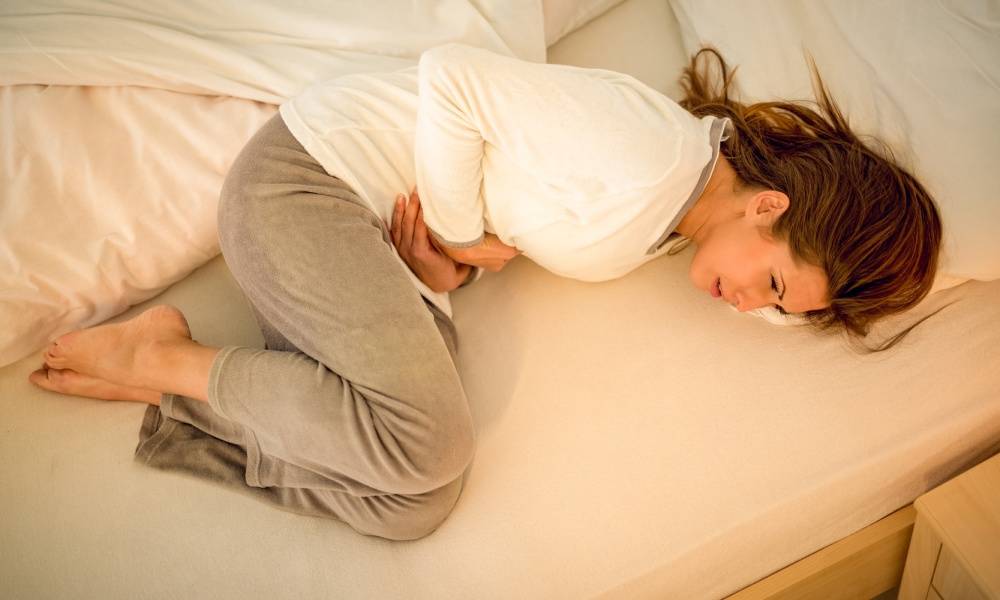Everything about Endometriosis
Abdominal pain, heavy periods, painful sex and menstrual cramps – Are they sounding like some of the routine burdens of being a woman? The annoyances and monthly pains around menstruation are a given (at least few are lucky about the pain) and painful sex is (unfortunately) very normal for many women. However, these symptoms are also hallmarked signs of endometriosis. It is a severely painful as well as under-diagnosed medical condition that affects about 10 % of women.
So, what is Endometriosis?
It is a painful and chronic disease affecting an estimated 1 in 10 women. It occurs when tissue similar to that normally found in the endometrium (uterus) begins to grow outside of your uterus. These misplaced growths are called as lesions. It can grow in the fallopian tubes, ovaries, and other areas around your pelvis which may lead to long-term pelvic pain mostly amid or between periods. Also, the pain with sex as well as other painful symptoms.
Areas where endometriosis grow
Most endometriosis is found in the pelvic cavity, including:
- Behind the uterus
- Under or on the ovaries
- On the bowels or bladder
- On the tissues that hold the uterus in place
- In extremely rare cases, it can also grow in the lungs or other parts of your body.
The Causes
Endometriosis isn’t just a result of anything you have or haven’t done. In fact, there are plenty of theories but no one exactly knows why some women get the condition and others do not.
The most widely accepted theory is, during menstruation not all the womb lining leaves the body properly. In lieu of some passes back into the pelvic cavity and attaches themselves to the reproductive organs which are known as retrograde menstruation. But, this doesn’t explain all the cases of endometriosis.
Symptoms
- Excessive bleeding during periods and bleeding between periods
- Painful periods (including severe menstrual cramps)
- Painful bowel movements, especially during periods
- Pain while urinating
- Urinary incontinence
- Abdominal pain and tenderness
- Intestinal pain
- Lower back pain and even pain in the legs
- Abdominal and pelvic pain with exercise
- Infertility
Risks
Endometriosis mostly affects women who are in their reproductive age.
A person may be at greater risk of developing endometriosis if she has risk factors as follows:
- A first-degree female relative with the condition
- Short monthly cycles of less than 27 days
- Beginning menstruation before age 11
- Heavy cycles that last longer than seven days
Who can get endometriosis?
- Most of the women who get endometriosis are diagnosed between the ages of 25 & 40. However, the condition can also start much earlier including when a woman has her first period and affects all races equally. Also, it is most common in women who haven’t had children. Women who have less than 25 days of periods or if they’re menstruating more than 7 days are more of a victim of endometriosis.
- You have a higher risk of developing the condition if your sisters or mother are affected.
- Rare in women after the menopause.
Is there a cure?
Till today, there is no scientifically proven cure for endometriosis as well as no real notion as to how it forms. The treatment options are often included hormone medication and painkillers. Additionally, the patches of endometriosis tissue can sometimes be surgically removed in order to improve symptoms and fertility.
Even though the chronic condition affects millions of women, it is not often talked about.
How is it treated?
If the patients wish to become pregnant, then doctors are advising to have an unprotected intercourse for 6 months to a year depending on the age and the amount of pain associated with the disease. If pregnancy doesn’t occur within that time, then treatment may be needed further.
However, for patients who aren’t seeking to become pregnant the following treatments may include:
Pain medication
It works well if the pain or other symptoms are mild. It ranges from over-the-counter remedies to strong prescription!
Hormone therapy
This is effective if your areas are small and you have minimal pain. The hormones can come in a pill form or by shot or injection or wise in a nasal spray. Progesterone, Danocrine, birth control pills, and gonadatropin-releasing hormone (GnRH) are the common hormones used to treat endometriosis pain.
Surgical treatment
Usually, this is the best choice if you have an extensive endometriosis, or if you’ve more severe pain. These treatments range from minor to major procedures. You and your doctor ought to talk about possible options for removing endometriosis even before your surgery. Based on the findings as well as treatment at surgery, you can discuss medical treatment options with your doctor after surgery.
So, yes, it is far more than just terrible periods. Unfortunately, many of the symptoms of Fibromyalgia are also the symptoms of Endometriosis and vice-versa. Most of the women who have Endometriosis aren’t even aware of it. That’s because the painful periods, urinary incontinence, pain during sex, etc are cliché. Well, they aren’t!

